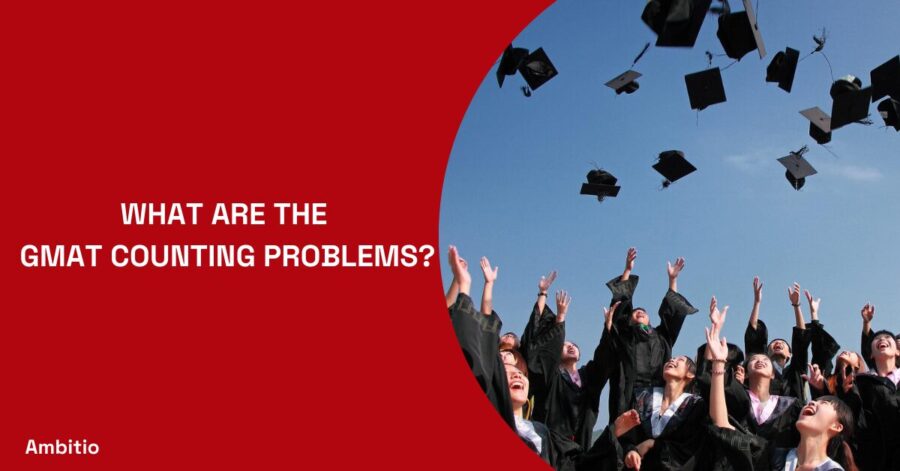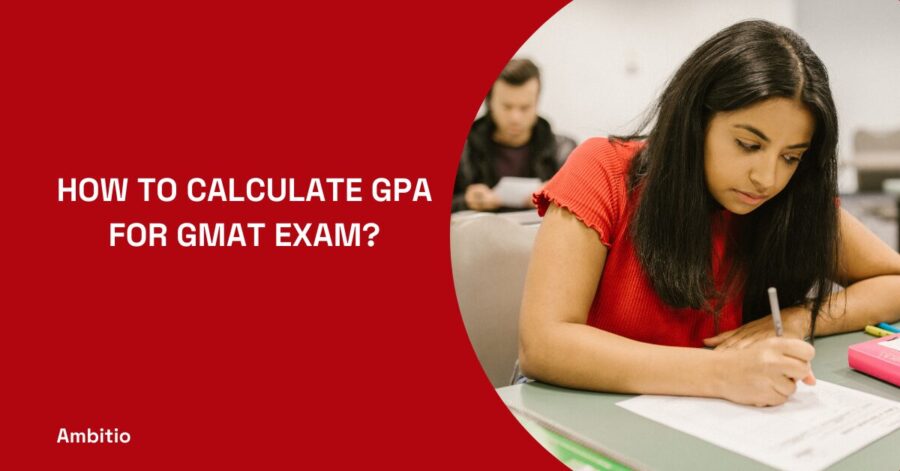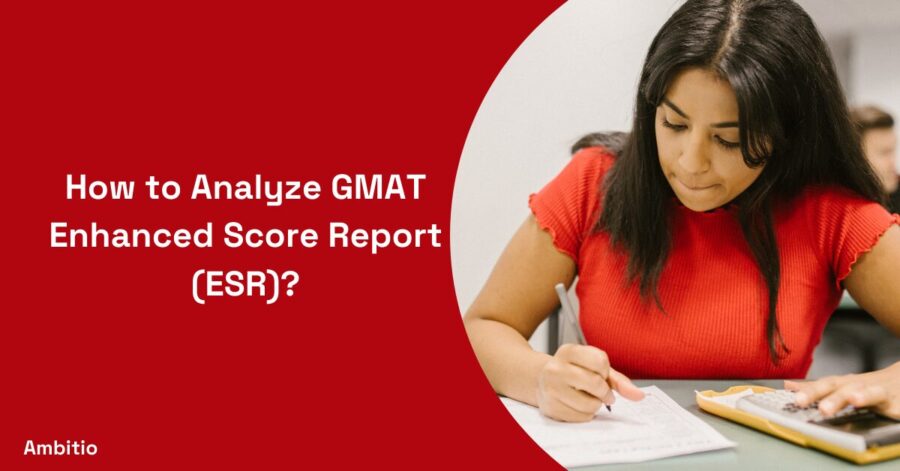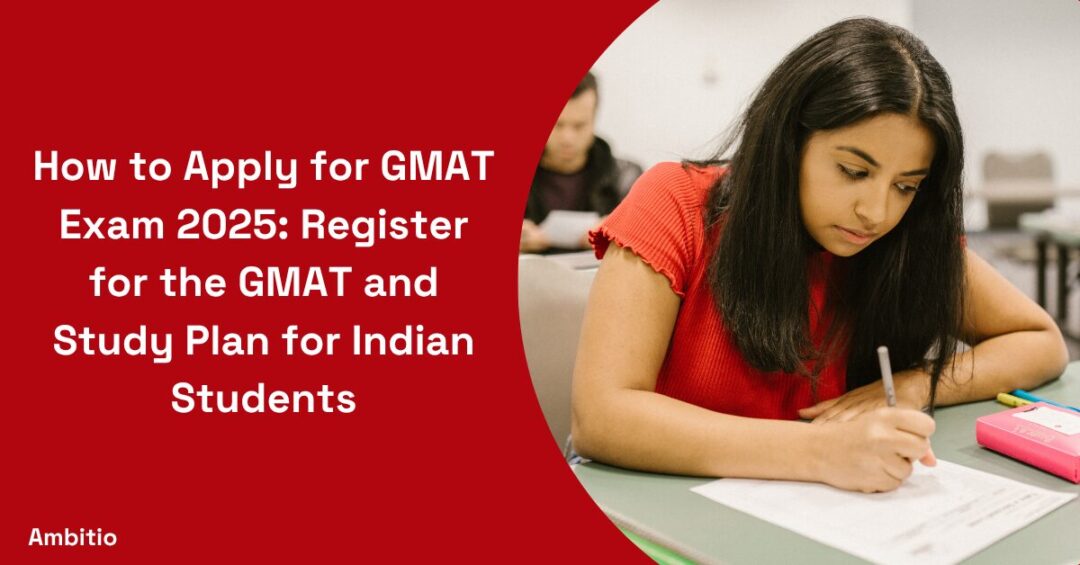17 December 2024
8 minutes read
GMAT Counting Problems – Permutation , Combination & Probability

Key Takeaways
- GMAT is crucial for MBA program applications worldwide.
- Counting problems involve calculating the number of ways to arrange or select items using counting principles.
- Breaking down problems, avoiding double counting, and using logical reasoning are crucial strategies to solve counting problems accurately and efficiently.
- Mastering the basics of probability, calculating favourable outcomes versus total outcomes, is essential for data analysis questions.
GMAT is regarded as an essential requirement of most MBA programs since it is recognized by most business schools globally. Achieving high results on the GMAT strengthens the application and shows the preparedness for an MBA program. Quantitative section of the GMAT exam is also known as the problem solving and data analysis section where you have to solve numerical problems. It includes two types of questions: It focuses more on its Problem Solving and Data Sufficiency sections.
Quantitative Problem Solving questions aim to test one’s logical and analytical skills in determining the solutions to certain quantitative problems. Data Sufficiency questions test how much you have understood concerning whether there is enough information to answer the question without solving the problem. For one to perform well in this segment, it is recommended to train on the software. Get acquainted with different practical question forms, refresh the knowledge of core concepts, and learn time and complexity management during the exam. Read the article below about counting methods and how you can solve various counting problems.
What is a Counting problem in GMAT ?
A counting problem in the GMAT is a part of mathematical or numerical section that requires the problem solver to assess the number of choices or distribution possibilities. For instance, you might be asked how many different ways you can arrange books on a shelf or select members for a committee. Using principles like permutations and combinations, you can calculate these numbers. Practicing topic-wise GMAT questions helps MBA aspirants become familiar with these concepts. By mastering counting problems, you enhance your problem-solving skills and improve your overall quantitative score . Hence , you beat the GMAT at ease .
Different Types of Counting Methods Employed in GMAT

Counting problems in the GMAT involve determining the number of ways to arrange or select items. These problems are essential for the quantitative section and often appear in data sufficiency and problem-solving questions. Here are the main counting methods used:
1. Permutations (Arrangements)
- Definition: Permutations are used when the order of items matters.
- Formula: For arranging nnn items, the formula is n!n!n! (n factorial), which is the product of all positive integers up to nnn.
- Example: If you have 3 books, the number of ways to arrange them is 3!=63! = 63!=6.
- GMAT Sample Questions: How many different ways can 5 students be seated in a row?
2. Combinations (Selections)
- Definition: Combinations are used when the order of items does not matter.
- Formula: For selecting rrr items from nnn items, the formula is C(n,r)=n!r!(n−r)!C(n, r) = \frac{n!}{r!(n-r)!}C(n,r)=r!(n−r)!n!.
- Example: If you have 5 books and want to select 2, the number of combinations is C(5,2)=10C(5, 2) = 10C(5,2)=10.
- GMAT Sample Questions: How many ways can a committee of 3 be selected from 8 people?
3. Counting Principle
- Definition: This principle helps in determining the number of possible outcomes when there are multiple choices.
- Multiplication Principle: If one event can occur in mmm ways and a second event can occur in nnn ways, the total number of possibilities is m×nm \times nm×n.
- Example: If you have 3 shirts and 4 pants, the number of ways to choose an outfit is 3×4=123 \times 4 = 123×4=12.
- GMAT Sample Questions: How many different ways can a password be created using 2 letters followed by 3 digits?
4. Probability and Outcomes
- Definition: Probability involves calculating the likelihood of a specific outcome.
- Basic Calculation: The probability of an event is the number of favourable outcomes divided by the total number of possible outcomes.
- Example: If you roll a 6-sided die, the probability of rolling a 3 is 16\frac{1}{6}61.
- GMAT Sample Questions: What is the probability of drawing an ace from a standard deck of cards?
5. Factorials in Geometry and Statistics
- Geometry: Counting problems can involve geometric shapes, like determining the number of ways to choose vertices of a polygon.
- Statistics: Factorials are used in permutations and combinations to solve statistical problems.
- Example: How many diagonals can be drawn in a polygon with 8 sides?
6. Sequences and Series
- Arithmetic Sequences: Problems may involve counting terms in a sequence.
- Sum of Series: Calculating the sum of terms in a sequence, such as the sum of the first nnn positive integers.
- Example: What is the sum of the first 10 positive integers?
Understanding these counting methods and practicing with GMAT sample questions can help MBA aspirants excel in the quantitative section. Mastering these concepts will enable you to tackle data sufficiency and problem-solving questions efficiently, ensuring you can accurately calculate the number of ways of selecting, arranging, or determining outcomes in various scenarios.
GMAT sample questions – Counting problems
Here are sample GMAT counting method questions with answers and explanations:
1. Permutation
Question: A bookshelf contains 6 different books. In how many ways can the books be arranged on the shelf?
Answer: The total number of ways to arrange 6 different books is computed using permutations.
Explanation: Since the order matters, we use the formula for permutations: P(n)=n!P(n) = n!P(n)=n! For 6 books: 6!=6×5×4×3×2×1=7206! = 6 \times 5 \times 4 \times 3 \times 2 \times 1 = 7206!=6×5×4×3×2×1=720 So, the books can be arranged in 720 different ways.
2. Combination
Question: A committee of 4 people is to be formed from a group of 10 individuals. How many different committees can be formed?
Answer: The total number of ways to select 4 people from 10 is computed using combinations.
Explanation: Since the order does not matter, we use the combination formula: C(n,k)=n!k!(n−k)!C(n, k) = \frac{n!}{k!(n-k)!}C(n,k)=k!(n−k)!n! For 10 individuals and choosing 4: C(10,4)=10!4!(10−4)!=10×9×8×74×3×2×1=210C(10, 4) = \frac{10!}{4!(10-4)!} = \frac{10 \times 9 \times 8 \times 7}{4 \times 3 \times 2 \times 1} = 210C(10,4)=4!(10−4)!10!=4×3×2×110×9×8×7=210 So, there are 210 different ways to form the committee.
3. Probability
Question: A box contains 3 red, 4 blue, and 5 green marbles. If a marble is randomly selected from the box, what is the probability that it is either red or blue?
Answer: The probability that the marble is either red or blue is computed by adding the probabilities of each individual event.
Explanation: First, compute the total number of objects: 3+4+5=123 + 4 + 5 = 123+4+5=12 Next, compute the number of favorable outcomes (red or blue marbles): 3+4=73 + 4 = 73+4=7 The probability is then: Number of favorable outcomesTotal number of outcomes=712\frac{\text{Number of favorable outcomes}}{\text{Total number of outcomes}} = \frac{7}{12}Total number of outcomesNumber of favorable outcomes=127
4. Geometry
Question: In a regular hexagon, how many distinct diagonals can be drawn?
Answer: The total number of ways to draw the diagonals in a hexagon is computed using geometry and combinatorial logic.
Explanation: First, compute the total number of ways to choose 2 vertices from 6 to form a line segment using combinations: C(6,2)=15C(6, 2) = 15C(6,2)=15 Since a hexagon has 6 sides, subtract the 6 sides from the total line segments to get the number of diagonals: 15−6=915 – 6 = 915−6=9 So, a regular hexagon has 9 diagonals.
5. Sequence
Question: What is the 10th term of the arithmetic sequence where the first term is 3 and the common difference is 4?
Answer: To compute the number of the 10th term, use the formula for an arithmetic sequence.
Explanation: The formula for the nth term of an arithmetic sequence is: an=a1+(n−1)da_n = a_1 + (n-1)dan=a1+(n−1)d Here, a1=3a_1 = 3a1=3 and d=4d = 4d=4 For the 10th term: a10=3+(10−1)×4=3+9×4=3+36=39a_{10} = 3 + (10-1) \times 4 = 3 + 9 \times 4 = 3 + 36 = 39a10=3+(10−1)×4=3+9×4=3+36=39 So, the 10th term is 39.
Tips to solve GMAT counting problems
Solving counting method questions on the GMAT efficiently requires a blend of understanding fundamental concepts and applying strategic approaches. Here are some tips and tricks to help you tackle these questions and mastering the GMAT time .
1. Understand the Basics
Permutations: Use permutations when the order matters. The formula is n!n!n! for arranging nnn objects and P(n,k)=n!(n−k)!P(n, k) = \frac{n!}{(n-k)!}P(n,k)=(n−k)!n! for arranging kkk objects out of nnn.
Combinations: Use combinations when the order does not matter. The formula is C(n,k)=n!k!(n−k)!C(n, k) = \frac{n!}{k!(n-k)!}C(n,k)=k!(n−k)!n!.
Probability: The probability of an event is given by Number of favorable outcomesTotal number of outcomes\frac{\text{Number of favorable outcomes}}{\text{Total number of outcomes}}Total number of outcomesNumber of favorable outcomes.
Sequences: For arithmetic sequences, use an=a1+(n−1)da_n = a_1 + (n-1)dan=a1+(n−1)d. For geometric sequences, use an=a1⋅r(n−1)a_n = a_1 \cdot r^{(n-1)}an=a1⋅r(n−1).
Geometry: Know the properties and formulas for various shapes, such as the number of diagonals in a polygon, calculated using n(n−3)2\frac{n(n-3)}{2}2n(n−3) for an nnn-sided polygon.
2. Break Down the Problem
Carefully read the question to determine what is being asked. Identify if it’s a permutation, combination, probability, or another type.
3. Use Simple Examples
If the problem seems complex, simplify it using smaller numbers or simpler cases to understand the pattern or approach.
4. Factorials and Simplification
Factorials grow rapidly, so learn to simplify expressions involving factorials. Cancel common terms before multiplying to reduce calculations.
5. Avoid Double Counting
When dealing with combinations and permutations, ensure you do not count the same arrangement more than once.
6. Practice Key Formulas
Regularly practice the key formulas so you can recall and apply them quickly during the test.
7. Draw Diagrams
For geometry and some combinatorial problems, drawing diagrams can help visualize the problem and find the solution.
8. Look for Symmetry
In problems involving arrangements or distributions, look for symmetrical properties to reduce the complexity of the problem.
9. Use Logical Reasoning
Sometimes, counting problems can be solved through logical reasoning rather than direct calculation. For instance, recognizing patterns or deducing from simpler cases.
10. Check Units and Labels
In probability and combination questions, ensure you correctly interpret what the ‘objects’ are and how they are labelled or categorized.
Examples of Applying Tips
Example 1: Permutation How many ways can 5 books be arranged on a shelf?
- Apply 5!=1205! = 1205!=120.
Example 2: Combination How many ways can you choose 3 out of 7 objects?
- Apply C(7,3)=7!3!(7−3)!=35C(7, 3) = \frac{7!}{3!(7-3)!} = 35C(7,3)=3!(7−3)!7!=35.
Example 3: Probability What is the probability of drawing a red marble from a bag with 3 red, 2 blue, and 5 green marbles?
- Total marbles = 10, Red marbles = 3. Probability =310= \frac{3}{10}=103.
Example 4: Sequence What is the 5th term in the sequence where a1=2a_1 = 2a1=2 and d=3d = 3d=3?
- a5=2+(5−1)⋅3=14a_5 = 2 + (5-1) \cdot 3 = 14a5=2+(5−1)⋅3=14.
Example 5: Geometry How many diagonals does a hexagon have?
- Use the formula n(n−3)2=6(6−3)2=9\frac{n(n-3)}{2} = \frac{6(6-3)}{2} = 92n(n−3)=26(6−3)=9.
Regularly practicing these tips and tricks, along with solving various practice tests, will help you become proficient in counting method questions on the GMAT and gradually leads to score improvement. By following all the essential tips and tricks , one can complete his/her GMAT preparation in just 2 months . Yes! Its possible !
Conclusion
Counting problems make up a great portion of the GMAT quant section, and if you are gearing up for a higher than average GMAT score, then be prepared for intricately designed counting problems on the GMAT. Therefore, through constant practice of permutations, combinations, and probability questions, you may be in a better position to sharpen your skills in the problem analysis area. Get yourself enrolled in the best GMAT quant online course to become one among the top.
Other methods that will help improve preparation include breaking down problems and avoiding counting problems twice. They should also have some sort of a guide or sharing on how one has to work hard and smart to attain that score of 705 on the GMAT to increase chances of getting selected by the top business schools.
Navigate Your College Application with Confidence: Take the first step towards a successful college application. Speak to our expert now and discover personalized solutions to navigate the process effortlessly.
FAQs
What is the approach to solving permutation problems on the GMAT?
To solve permutation problems, use the formula n
!
n!n! for arranging n
nn items or P
(
n
,
k
)
=
n
!
(
n
−
k
)
!
P(n, k) = \frac{n!}{(n-k)!}P(n,k)=(n−k)!n! for arranging k
kk items out of n
nn. Ensure you account for the order of items in your calculation.
What is the counting principle and how is it used?
The counting principle helps determine the number of possible outcomes when there are multiple choices. If one event can occur in m
mm ways and a second event can occur in n
nn ways, the total number of possibilities is m
×
n
m \times nm×n. This principle is useful for calculating combinations of different items.
Why are factorials important in solving GMAT counting problems?
Factorials (n
!
n!n!) represent the product of all positive integers up to n
nn and are crucial for calculating permutations and combinations. They help determine the total number of ways to arrange or select items.
What strategies can help solve GMAT counting problems efficiently?
Key strategies include understanding basic concepts, breaking down complex problems, simplifying using smaller numbers, avoiding double counting, practicing key formulas, drawing diagrams for visualization, and using logical reasoning to identify patterns.
Can you explain how to solve combination problems?
For combination problems, use the formula C
(
n
,
r
)
=
n
!
r
!
(
n
−
r
)
!
C(n, r) = \frac{n!}{r!(n-r)!}C(n,r)=r!(n−r)!n! to calculate the number of ways to select r
rr items from n
nn. Since the order does not matter, this formula helps you determine the total number of unique selections.
How do I calculate probabilities in GMAT counting problems?
To calculate probabilities, use the formula Number of favorable outcomes
Total number of outcomes
\frac{\text{Number of favorable outcomes}}{\text{Total number of outcomes}}Total number of outcomesNumber of favorable outcomes. Identify the total number of possible outcomes and the number of favourable outcomes, then divide the latter by the former.

You can study at top universities worldwide!
Get expert tips and tricks to get into top universities with a free expert session.
Book Your Free 30-Minute Session Now! Book a call now




























